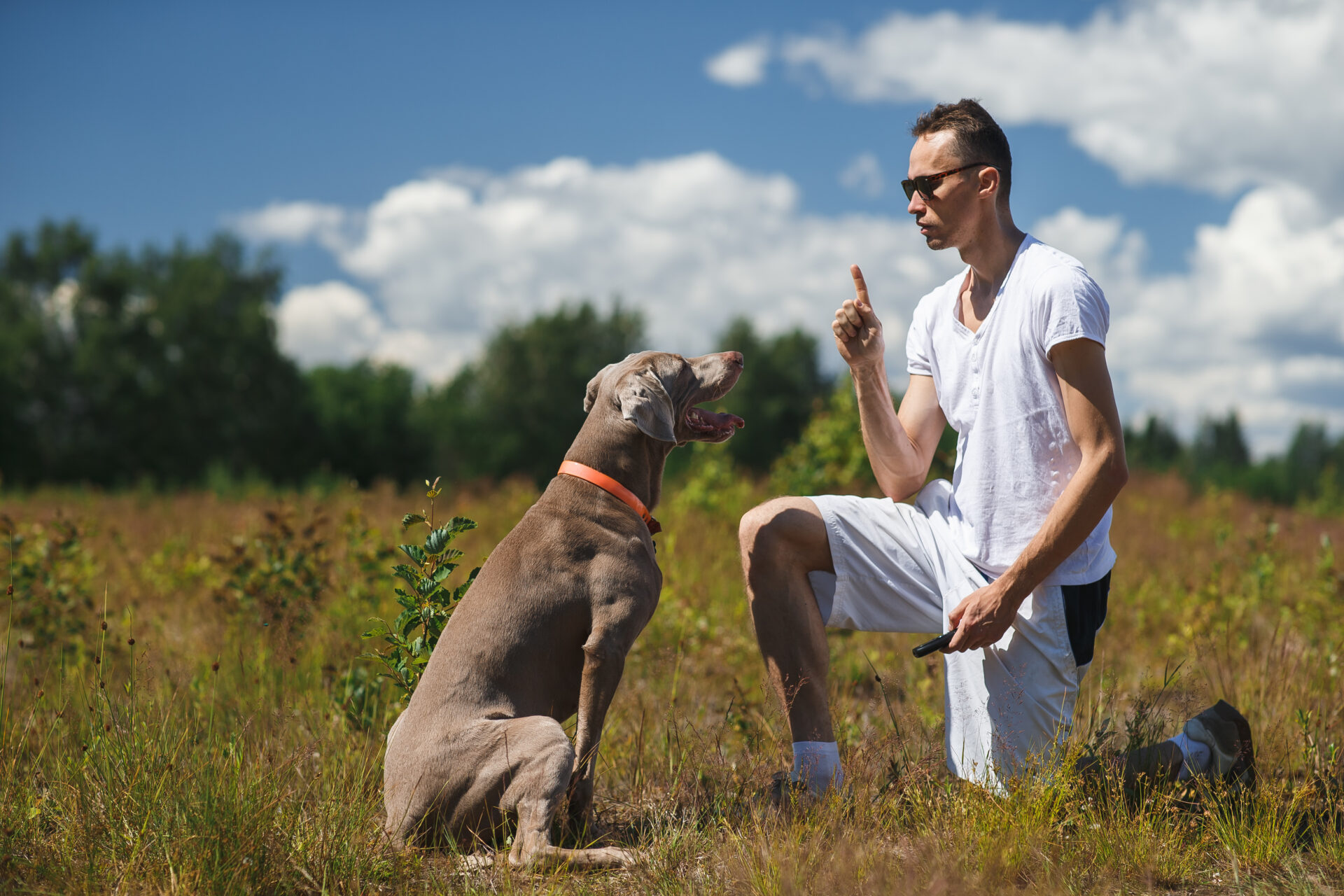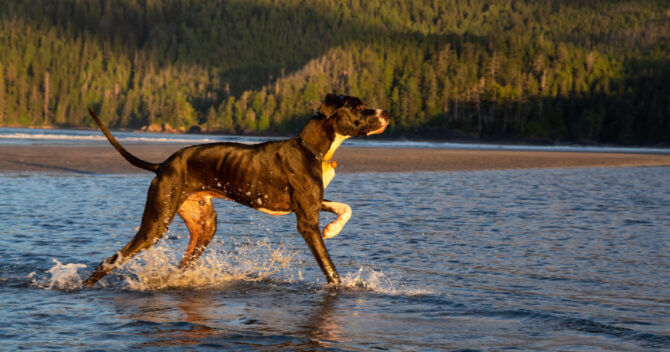When to start learning a dog with the command "stay"?
Teaching your dog the command "stay" is best undertaken in the first 3-6 months of a dog's life. Of course, we can teach a four-legged friend new commands at any age. However, it must be taken into account that adult dogs will be more difficult to train, as they already have certain norms and rules of behavior. Differences in the speed of mastering the stay command may also appear depending on the breed and temperament of the pet, as well as the competences, attitude and zeal of the owner.
How to prepare a dog to learn the command "stay"?
Your pet should be accustomed to the collar and leash, and be responsive to its name. The knowledge of the "sit" and "go to foot" or "to me" commands will also facilitate the training of the "stay" command. Training should only be started when your pet is in good physical and mental condition, is not sick, overstimulated or tired. A few hours before the training session, you should feed your dog, and just before following the instructions, take him for a walk to take care of his physiological needs and use up some energy.
What is the right place to learn the command "stay"?
For the training zone, you should choose a quiet place, house, private garden or yard. In the first stage of learning, it is important to reduce your dog's distractions. Therefore, additional noise and the presence of other people or animals is inadvisable. As the dog begins to make progress with the command, gradually move him out of the secluded area. You can change the training location or invite viewers. However, if you notice that your pet is distracted, it is too early to change the place of training. The last stage, necessary to further consolidate the learned command, should take place in a new environment for the dog, with additional stimuli, such as: strangers, animals, vehicle traffic, noisy sounds.
What will we need to teach the dog to "stay"?
To learn the command "stay", we will need: a collar, a leash, treats and a favorite toy, as well as a lot of patience and a positive attitude. Training should take place every day, in 5-10 minutes sessions. If your dog is tired or distracted it is best to stop training and continue the next day. The training treat should be in the form of small pieces, not crumble and not get your hands dirty. It is best to choose the right treat based on experience, i.e. decide on the one that your pet likes the most. You can also choose several types of treats and exchange them during training so that the dog does not get bored with them.
How to prepare to learn the "stay" command?
First of all, we need to understand that training a dog is a responsible process. It requires a lot of patience, consistency in action, friendly treatment and positive reinforcement. In this process, we gradually move from simple to more complex tasks, from faulty execution to accurate and easy-going tasks. To begin with, the dog must understand what is required of him, and in this he needs help. Each correct action of a pet must be rewarded in order to create an element that increases the likelihood of the desired behavior, i.e. positive reinforcement. It is very important at this stage of training. Under no circumstances should the dog be punished or reprimanded for failure to follow instructions or for misconduct. All commands must be given in a calm and confident voice, with the same intonation and very clear. Gestures should be clear and unambiguous, and praise for success should be sincere and kind.
How to teach a dog to "stay" - step by step
First stage
We start the exercises in a secluded place. We stand in front of the pet, a short distance from him and give him the command "sit". When the dog is sitting, we reward him with a treat. At the beginning, the dog should be rewarded very often, that is, we give the treats one after the other. The pet should understand that it is supposed to freeze in this position. Remember not to leave your dog without a reward for too long.
Second stage
In the second stage, stand in front of the dog (front) and give him the command "sit". When it is seated, we take one step back, then quickly go back and reward the pet if it has not moved. Then we take two steps back and quickly reward the dog again if he has not changed position. Then we take three steps back and so gradually increase the distance from the dog. Remember to take the step towards the dog very quickly, so that the pet does not have time to get up and there is a relationship between the correct attitude of the dog and the reward.
After a few such exercises, we can introduce the verbal command "stay". We plant the dog and stand in front of him. We clearly say "stay" and take a step back. Then we quickly go back and reward the dog (if he has not stood up). We repeat the entire procedure from the second step, enriching it with the command "stay".
If the dog does this exercise correctly and remains seated, we can reduce the frequency of rewarding with treats and gradually extend the time it is to stay in place. We walk away for a few steps, count three seconds after we come back and reward the pet. Then we walk away for four seconds, come back and give the reward. Depending on how our pet copes with the exercise, over time we increase both the distance at which we walk away from the dog and the time of return (up to about 30 seconds).
When the dog properly performs the exercises in a secluded place, we can start training the command "stay" in less favorable conditions, eg in the yard. We repeat the exercise from step four. Over time, with good results, we can move to more distracting places.
Stage three
In the last stage of training, we can teach the dog to stay in a given position, despite additional distractions, e.g. during exercises, we throw his favorite toys or turn on sound signals. Of course, we reward the pet if it remains in the position we have chosen. It is assumed that the command "stay" is mastered if the four-legged friend, under distracting stimuli, can stay in a place (on command) for about 1 minute, up to 50 meters from the caregiver.
Maybe you'll like it:



